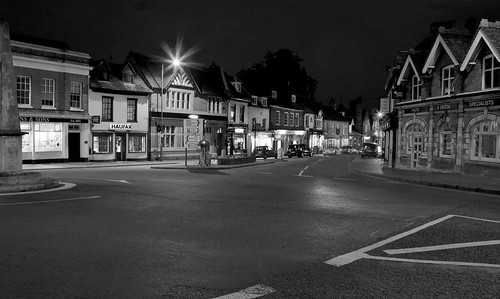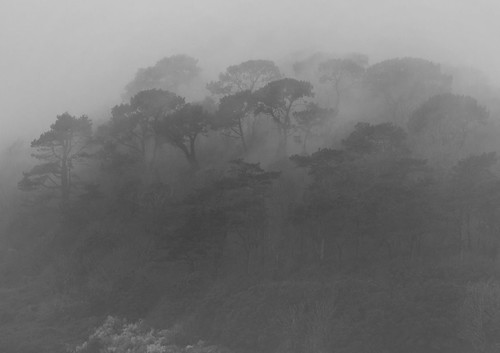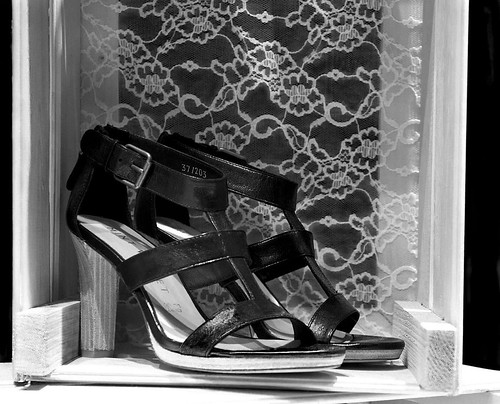Night shoots can yield great images with a little thought.
There are a few things that will help you get better results. Understand your equipment, ensure you have a steady base, work with your settings. After that it’s about your photographic skills.
1. Before your shoot
Plan ahead for your night shoot. A little thought about night composition is useful. Consider your safety too. In the dark it’s easy to injure yourself, break equipment and lose things. These two articles will help to prepare you:
Preparing for a Night Shoot
Out on a Night Shoot – Night Composition
2. Equipment
You will need to use longer exposures on a night shoot. This means that to get a sharp image you should use a tripod. Most night exposures in an urban environment are from about two seconds to about 30 seconds. Some could be much longer than that, especially if you are outside urban areas where there is little light pollution.
You cannot get a sharp image hand-holding your camera for extended exposure periods. Tripods provide a stable platform at at any time. At night they are essential. If you don’t have a tripod there are alternatives, although I have not found any as effective and flexible as a good tripod.
You can use any of your ordinary day equipment on a night shoot. Lenses, cameras and even flash can be used with no problem. However, you may need to use your equipment in very different ways to the daytime. Also, be prepared to get very different results. You will need to experiment to get familiar with your equipment in night conditions.
You can’t use a Flash-light (torch) when you are shooting, it will affect your local light conditions and the shots you take. Switching a torch on and off will also cause night blindness. You have wait while your eyes adjust to the change in light levels each time. You can get away with a red-light LED torch. I have one that I can wear on my head and it has a red and white light. Red lights don’t spoil your night vision so much. They do affect the shot. So don’t forget to turn them off when shooting.
It’s best to work with the ambient light if you can, especially in urban areas. Using your equipment at night requires that you have a finger touch familiarity. You will probably be surprised if you have been using your camera a lot. You may know many of the buttons by touch anyway. However, some buttons you may not know. Practice builds familiarity.
3. Anti-vibration compensation
One button you may not be familiar with is the one to turn on/off vibration compensation motors. These motors, usually in your lens, help stabilise your shots (Canon: Image Stabilisation; Nikon: Vibration Reduction). They help reduce movement from hand-shake. On a tripod the motor causes vibration which is amplified by the tripod – making the situation worse. This is not just a night shoot trick to reduce vibration, it should be used any time you are using a tripod. It helps your image to be sharper if you reduce anything that causes vibration or movement.
4. Auto-focus (AF) and Manual focus (MF)
At night it is quite likely AF will not work. It might appear to be ‘hunting’ for a focus but not find it. Don’t worry! If you focus on the margin between a light and dark spot it will work again. AF works by detecting contrasts. Anyway, it is better to turn off AF and use MF. Manual focus is much more precise at night. It also stops the lens from ‘hunting’ for a focus point.
5. Flash
Think about how you want to use your flash. If you are using auto-settings your flash may fire when you don’t want it to go off. Read your manual to find out how to turn it off. You will also find a way to change the light intensity of your flash. On-camera flash is a particularly poor tool at night and is very difficult to use to any effect at all. My advice is turn it off for your night shoot work. If you must use flash, consider off-camera flash. Now that IS fun!
In general, you don’t need flash on a night shoot for general shots. In an urban environment the lights are sufficient from the streets. However, the length of your exposure could be very long. You might usefully use off-camera flash to manually fire to illuminate something, a statue, a tree, a car… whatever. The pattern of flashes you fire will determine your local lighting. In the dark flash will only effectively light a small area around where it is fired. So, don’t expect it to light up your whole shot. There will be an article later on night-lighting shots.
6. Settings for a night shoot
If you are using auto-settings on a night shoot you will have problems. There may be a night-mode setting on your camera. Don’t expect to get great results with it. Best results come with manually setting the camera up yourself while doing a night shoot. You should consult your manual if you really want to use pre-programmed settings.
Learn how to use manual settings from the start. A night shoot is great fun. Getting the results you want makes it really worthwhile. Use ‘M’ – manual mode. This is the only certain way to get the results you want. Remember, the length of the exposure is the critical setting on a night shoot. You will be working with long exposures all the time. The shutter may be open between a tenth of a second through to, well, possibly hours. It’s more likely you will start with settings of around 1 to 30 seconds. After 30 seconds you will need to change to the ‘B’ or bulb mode setting on DSLRcameras.
Long exposures are like filling a bucket with water. Over time the bucket gradually fills up. Over a long exposure light fills the shot making it brighter and brighter. Even moderate local lights may overwhelm areas of your long exposure with brightness. However, without a longer exposure you will not get enough light for the darker areas of the scene. Here are some basic pointers.
- A wide Aperture lets in more light (settings around f4 or less are wide open). You will have a lot of bokeh in the background with a wide aperture. To avoid that you will need a longer exposure (and a narrower aperture).
- A high ISO will permit faster exposures. High ISO settings will create a lot of digital noise in the final image. To avoid that you should use low ISO and a longer exposure.
- Longer exposures (shutter speed or time value) give you greater clarity and a wider depth of field in your shot. However, the camera will be much more vulnerable to vibration. (Tripod – remember?).
You will need to adjust your settings to create the correct exposure. If you have not used manual settings before you should consider this simple set up…
(Assumption: urban environment at night, some street lights and other lighting)
– Set ISO to 100 (Low ISO will give low noise – the best quality image).
– Set aperture to f8 for close focus. Landscapes/long focus, use f14.
– Set Time value (shutter speed) to about two seconds.
Now take a shot and check the screen to see what it is like (“Chimping”)
Black? Too dark? – OK, turn the shutter speed on one click and try again, and again, until your shot looks right.
In fact the internal light meter will show you when the exposure is correct. When you push the release button half way, the needle in the bottom of the viewfinder (DSLR) will be centred.
A little experimental work with longer or shorter shutter speeds will give you an opportunity to try out a few shots. Having a go is the best way to move forward with night shots. Everyone messes up quite a lot of shots to start with until you get the feel for the correct exposure. It’s really rewarding when it goes right! Have fun…
Planning and Preparing for a Night Shoot
Definition: Ambient Light
Definition: Exposure
Some things you should know about on-camera flash
Definition: Hunting, Auto-focus
Is your shot ruined by bright white spots? (discusses the ‘blinkies’)
Can You Use the Histogram on Your camera
Examine Shots Before Shooting Again – “Chimping”
Definition: Exposure
Definition: Aperture
Definition: f number
Definition: ISO
Definition: Shutter Speed
bulb mode
Out on a Night Shoot – Night Composition





